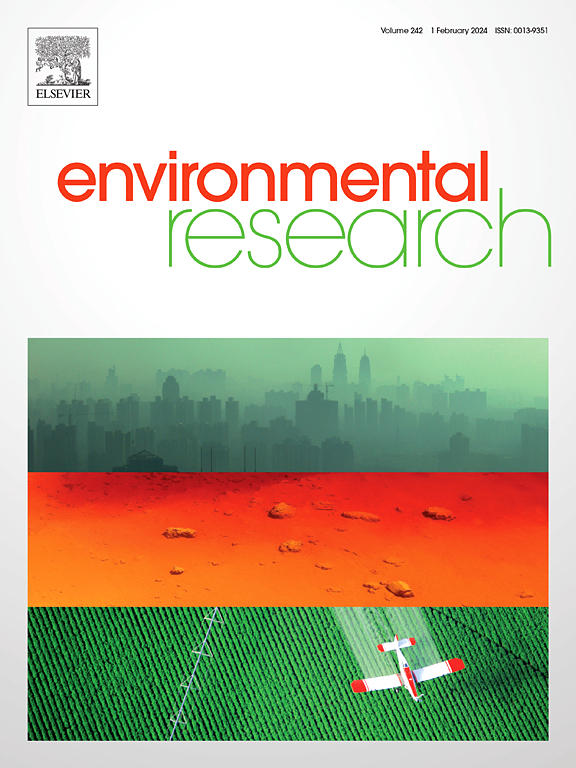Aeration-assisted removal of tetracycline from wastewater by biochar: mechanisms and cost-benefit analysis
IF 7.7
2区 环境科学与生态学
Q1 ENVIRONMENTAL SCIENCES
引用次数: 0
Abstract
The synergistic removal of antibiotics from wastewater by biochar adsorption and degradation under aeration-driven conditions is limited so far, and its feasibility has not been evaluated through a cost-benefit analysis. This study systematically investigated the removal of tetracycline by four biochars such as peanut shell biochar (PSB), rice straw biochar (RSB), sewage sludge biochar (SSB), and putrescible waste biochar (PWB) from wastewater under aeration conditions, then explored their mechanisms and key influence factors. Furthermore, a rigorous cost-benefit analysis was conducted to assess the economic feasibility of the aeration-assisted biochar method. Results showed that the tetracycline removal efficiency of biochar under aeration was significantly higher than that under anaerobic conditions, with SSB achieving the highest efficiency (86.9 %). Tetracycline underwent substantial degradation with the rate of SSB (16.7 %) > RSB (10.7 %) > PWB (7.8 %) > PSB (4.4 %), which was primarily driven by aeration-induced hydroxyl radicals (·OH) through oxidation of double bonds, loss of dimethylamino groups, dehydration, oxidation of aromatic rings, and cleavage of carbon rings. The impacts of aeration intensity, biochar dosage, pH, ionic strength, ammonium nitrogen, and oxygen-consuming organic compounds on the removal varied with biochar types. The tetracycline removal by SSB was minimally affected by solution composition, with high efficiency in simulated wastewater and stable regeneration performance. Furthermore, the aeration-assisted SSB method exhibited the highest economic benefits for tetracycline removal, costing 49.8 USD kg−1 compared to chemically modified biochar (77.9–1791.7 USD kg−1) and biochar-based advanced oxidation (78.9–202.4 USD kg−1). This study highlights the viability of aeration-assisted biochar for tetracycline removal in wastewater.

生物炭曝气辅助脱除废水中的四环素:机理和成本效益分析
目前,曝气驱动条件下生物炭吸附降解协同去除废水中抗生素的研究有限,其可行性尚未通过成本效益分析进行评估。本研究系统考察了花生壳生物炭(PSB)、稻草生物炭(RSB)、污泥生物炭(SSB)和可腐烂废物生物炭(PWB)在曝气条件下对废水中四环素的脱除效果,并探讨了其脱除机理和关键影响因素。此外,还进行了严格的成本效益分析,以评估曝气辅助生物炭方法的经济可行性。结果表明,曝气条件下生物炭对四环素的去除率显著高于厌氧条件下,其中SSB的去除率最高(86.9%)。四环素的降解率为16.7%;RSB (10.7%) >;PWB (7.8%) >;PSB(4.4%),主要是由曝气诱导的羟基自由基(·OH)通过氧化双键、二甲氨基基团的损失、脱水、芳环的氧化和碳环的裂解引起的。曝气强度、生物炭投加量、pH、离子强度、铵态氮和耗氧有机物对去除率的影响因生物炭类型而异。SSB对四环素的去除受溶液组成的影响最小,对模拟废水的处理效率高,再生性能稳定。此外,与化学改性生物炭(77.9 ~ 1791.7美元kg−1)和生物炭基高级氧化(78.9 ~ 202.4美元kg−1)相比,曝气辅助SSB法去除四环素的经济效益最高,为49.8美元kg−1。本研究强调了曝气辅助生物炭去除废水中四环素的可行性。
本文章由计算机程序翻译,如有差异,请以英文原文为准。
求助全文
约1分钟内获得全文
求助全文
来源期刊

Environmental Research
环境科学-公共卫生、环境卫生与职业卫生
CiteScore
12.60
自引率
8.40%
发文量
2480
审稿时长
4.7 months
期刊介绍:
The Environmental Research journal presents a broad range of interdisciplinary research, focused on addressing worldwide environmental concerns and featuring innovative findings. Our publication strives to explore relevant anthropogenic issues across various environmental sectors, showcasing practical applications in real-life settings.
 求助内容:
求助内容: 应助结果提醒方式:
应助结果提醒方式:


